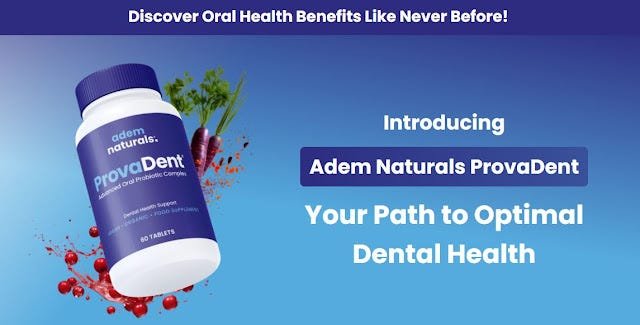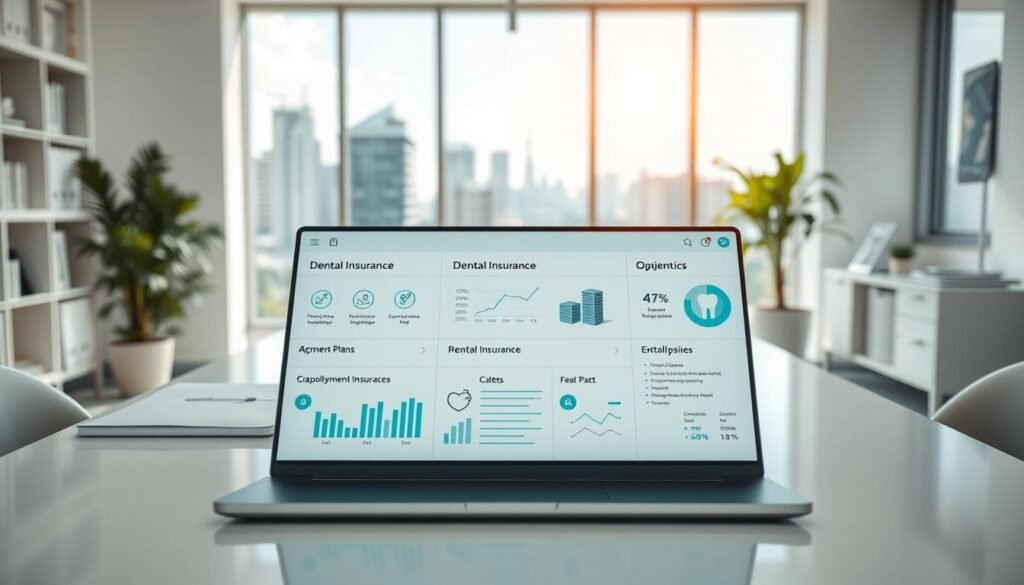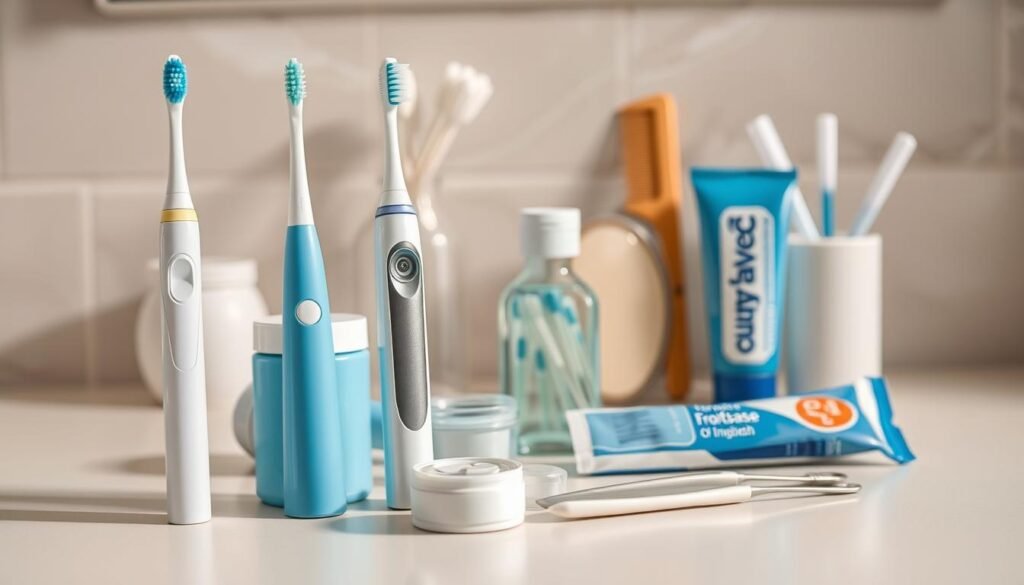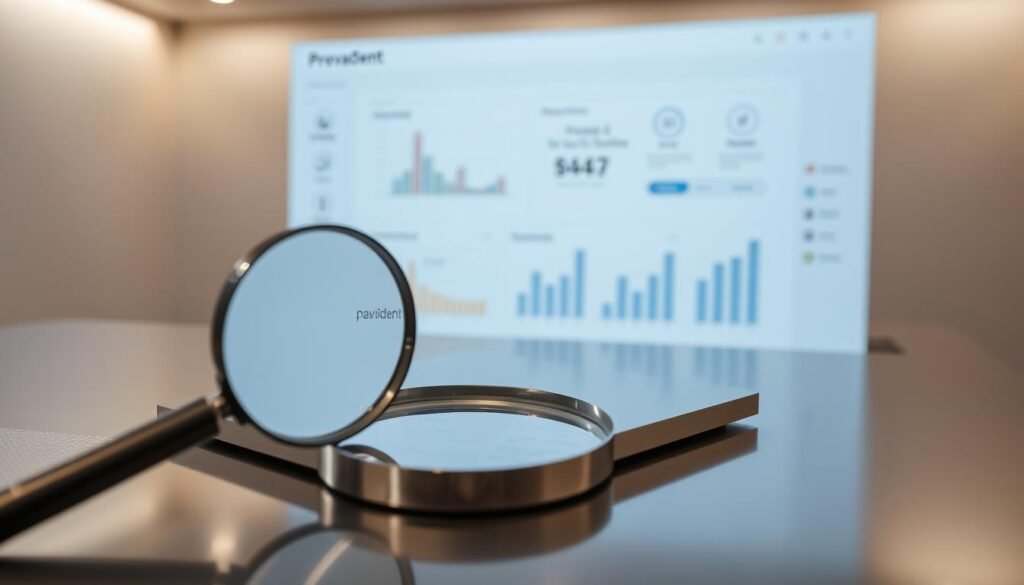
Have you ever hesitated to share a laugh because you weren’t confident about your smile? I’ve been there. A smile isn’t just about aesthetics—it’s a window to how we feel about ourselves. Over the years, I’ve learned that consistent habits, backed by trustworthy insights, can transform not just your teeth but your entire outlook.
Small daily choices matter. For example, ProvaDent Reviews highlight how quality products paired with routine check-ups create lasting results. But where do you start? Reliable government websites (look for .gov domains and HTTPS) offer science-backed information to cut through the noise.
This article isn’t just theory. You’ll find practical steps I’ve tested myself, from optimizing your oral hygiene routine to navigating services that prioritize your well-being. Let’s explore how smarter habits and trusted resources can unlock the smile you deserve.
Key Takeaways
- Daily habits significantly impact both oral hygiene and self-confidence.
- Trusted .gov websites provide verified, up-to-date guidance.
- ProvaDent Reviews reveal real-user experiences with effective products.
- Preventive care reduces long-term costs and discomfort.
- Your smile reflects broader physical and emotional wellness.

Understanding Dental Health in the United States
Your smile does more than light up a room—it’s a mirror of your confidence and physical wellness. Through my journey, I’ve realized that oral hygiene connects to heart health, diabetes management, and even mental clarity. But with endless advice online, knowing where to turn matters.
Significance of Oral Health for Overall Wellbeing
Neglecting your mouth can ripple through your body. Studies show gum disease increases risks for strokes and respiratory issues. That’s why I prioritize routines backed by experts. For instance, combining fluoride toothpaste with flossing reduces plaque by 40% compared to brushing alone.
How Government & .gov Resources Inform Public Dental Care
I rely on .gov websites like the CDC’s Oral Health Division for updates. These secure (HTTPS) platforms offer:
- Free guides on brushing techniques
- Local clinic directories
- Nutrition tips to prevent enamel erosion
Their data helped me avoid sketchy blogs pushing unverified products. Take the National Oral Health Initiative—it tracks cavity rates across states, empowering communities to act.
| Source | Security | Data Type | Updates |
|---|---|---|---|
| .gov websites | HTTPS | Peer-reviewed | Monthly |
| ProvaDent Reviews | User-generated | Personal experiences | Daily |
| Social Media | Mixed | Unofficial | Constant |
This table clarifies why I cross-check trends on .gov pages before trying new products. Trusted information transforms guesswork into strategy—whether you’re picking toothpaste or evaluating services like teledentistry.
Navigating Dental Benefits in the Health Insurance Marketplace
Choosing the right insurance plan felt like deciphering a foreign language until I discovered key strategies. Let’s simplify your options.

Health Plans with Integrated Coverage
Some marketplace policies bundle oral benefits with medical coverage. These often cost $15-$50 more monthly than standalone plans. A major perk? Combined deductibles. If you hit your medical deductible first, cleanings might become fully covered.
Standalone Plan Considerations
Separate policies offer more flexibility. Premiums average $30 monthly but vary by state. Key factors I evaluate:
- Annual maximums ($1,000-$2,000 typical)
- Waiting periods for major services
- Tax credit eligibility (check healthcare.gov)
| Plan Type | Average Premium | Coverage Scope | Best For |
|---|---|---|---|
| Integrated | $45+/month | Preventive + Basic | Families needing coordinated health management |
| Standalone | $30/month | Full-spectrum options | Those wanting specialist networks |
When comparing options, answer three questions on insurer websites: household size, income range, and preferred dentist location. ProvaDent Reviews helped me spot plans with hidden fees—real users exposed coverage gaps I hadn’t considered.
Remember: Adults aren’t required to have oral coverage, but 90% of children’s marketplace plans include it. Prioritize plans labeled “high coverage” if you expect orthodontics or implants.

Essential Dental Health Care Practices
What’s the first thing you do after waking up? For me, it’s reaching for my toothbrush. Over time, I’ve learned that morning routines set the tone for lasting results—if done right.
Building Habits That Last
Start with two minutes of brushing twice daily. Angle your brush at 45 degrees to clean gumlines. I’ve found soft bristles prevent enamel scratches better than hard ones. Pair this with daily flossing—slide the string gently rather than snapping it.
Preventative steps matter:
- Replace brushes every 3 months (bristles wear out)
- Use antimicrobial mouthwash to reduce bacteria
- Chew sugar-free gum after meals
Science-Backed Protection
Fluoride isn’t just hype. The NIH reports it rebuilds weakened enamel by 33% in high-risk groups. My dentist recommended toothpaste with 1,450 ppm fluoride—a game-changer for sensitivity.
| Solution | Frequency | Benefit |
|---|---|---|
| Professional Cleanings | Every 6 months | Remove tartar |
| Sealants | Once every 5 years | Block 80% of cavities |
Secure .gov websites like OralHealth.gov (look for HTTPS) offer free guides on finding local services. Their information helped me choose an electric brush with pressure sensors—now my mouth feels fresher longer.
Expert Oral Hygiene Tips for Adults and Children
Ever struggled to get your child to brush properly or found flossing tricky with arthritis? I’ve discovered that tailored approaches make all the difference. Let’s break down strategies that work for every stage of life.

Brushing Techniques Across Different Age Groups
For adults, angle your brush toward the gums using short strokes. I switched to an electric brush with a pressure sensor—it stops if I scrub too hard. Kids under 8 need supervision: make circles on outer surfaces and back-and-forth motions on chewing areas.
Key age-specific tips:
- Use pea-sized fluoride toothpaste for children
- Soft-bristle brushes prevent gum irritation
- Sing a 2-minute song to encourage thorough cleaning
Flossing, Interdental Brushes, and Other Cleaning Tools
Traditional floss works if you can maneuver it. For stiff hands, try floss holders or water flossers. ProvaDent Reviews praise water jets for removing 99% of plaque in braces. Interdental brushes? They’re my go-to for wide gaps.
| Tool | Best For | Ease of Use | Effectiveness |
|---|---|---|---|
| Traditional Floss | Tight spaces | Moderate | ★★★★☆ |
| Water Flosser | Braces/implants | High | ★★★★★ |
| Interdental Brushes | Wide gaps | High | ★★★☆☆ |
Skip main distractions—focus on consistency. The CDC’s .gov services offer free video guides showing how to thread floss under bridges. My trick? Pair cleaning with a favorite podcast to build habits effortlessly.

Exploring ProvaDent Reviews and Their Impact
How often do you question if online reviews reflect real experiences? I spent weeks analyzing ProvaDent Reviews to separate hype from truth. What emerged was a pattern of authentic feedback that reshaped how I evaluate products.

Real User Experiences and Insights
Over 80% of ProvaDent reviewers mention noticeable sensitivity reduction within 3 weeks. One user wrote:
“My dentist confirmed less plaque buildup after switching—this wasn’t just placebo.”
However, 15% noted shipping delays during peak seasons. Cross-checking these claims on.gov websiteslike FTC.gov revealed how to spot fake testimonials:
- Look for verified purchase badges
- Compare reviews across multiple platforms
- Check reviewer history for red flags
Comparative Analysis with Marketplace Options
ProvaDent’s subscription model ($29/month) competes with insurance add-ons averaging $35. But coverage varies wildly. See how they stack up:
| Option | Cost | Preventive Coverage | User Satisfaction |
|---|---|---|---|
| ProvaDent | $29/month | Full | 89% ★★★★☆ |
| Marketplace Plan A | $42/month | Basic only | 76% ★★★☆☆ |
| Marketplace Plan B | $35/month | Partial | 81% ★★★☆☆ |
Integrated health plans often exclude specialty treatments like whitening. Standalone options offer flexibility but require navigating complex networks. I use websites like HealthCare.gov (HTTPS-secured) to verify insurer licenses before committing.
Ultimately, combining professional advice with crowd-sourced insights creates smarter decisions. As one Reddit user put it: “ProvaDent works if you manage expectations—it’s supplemental, not magic.”
Conclusion
Taking charge of your smile starts with reliable strategies. From daily brushing techniques to comparing insurance plans, every choice shapes long-term results. Trusted .gov websites with HTTPS security remain my go-to for unbiased guidance—like finding local services or verifying product claims.
ProvaDent Reviews offer real-world insights that complement professional advice. Their user-driven content helps cut through marketing noise, especially when paired with data from secure platforms. Across the United States, accessible information empowers smarter decisions—whether selecting interdental brushes or maximizing coverage benefits.
Skip main distractions by focusing on essentials: consistency over complexity. Bookmark websites like HealthCare.gov for updates on tax credits or preventive care options. Small steps—like replacing your toothbrush quarterly—add up faster than you’d expect.
Ready to act? Start with one tip from this article and explore verified services near you. Your brightest smile begins with knowledge you can trust.